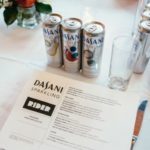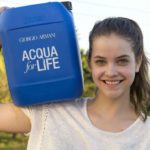Coca-Cola’s Equipment Connectivity Will Help Track Product Inventory, Monitor Energy Efficiency, and More
Coca-Cola is connecting its fleet of cold drink equipment found in convenience stores and other retail outlets to track product inventory, monitor energy efficiency and more—with the goal of ultimately driving drink sales.
Coolers in select markets are now wired with sensors that can, among other things, correlate the number of times a shopper opens the door with sales. The project leverages the “Internet of things (IoT)”—the inter-networking of “smart” devices that collect and exchange data.
“We are essentially doing two things: using sensors in our coolers to collect data, and then using that data to help our bottlers and customers make better decisions. Some beacons are hardwired, some are battery-powered, and some have cameras. We are adding them to our cold drink equipment, connecting them via Bluetooth and sending the information to the cloud,” said Pete Rohwer, Director of Equipment Commercialisation, Coca-Cola North America.
A dashboard provides a snapshot of all connected units. Coca-Cola bottlers can track the location of its intelligent cold drink fleet—down to the outlet level—and monitor temperature, lighting, energy use, placement and overall equipment health and performance.
Some coolers are equipped with cameras that provide a real-time inventory view to help bottlers and retailers optimise product placement, manage out-of-stocks and troubleshoot issues virtually.
“We can monitor equipment performance to identify service needs before maintenance is needed. And we can see how door swings link to transactions and determine if it is stocked with the right beverages,” explained Rohwer.
For example, retailers may discover that four large single-door coolers get less combined traffic than one small, single-door cooler. Store owners also can detect changes in shopper patterns that can be compared to daily sales figures and then linked to changes in cooler location, product temperature, sales and promotions.
Coke’s connected coolers, which debuted in Bulgaria in 2015, are currently being tested in Chicago and Dallas.
“We are purposefully starting slowly in smaller outlets. We are training sales teams and getting the right data flowing before scaling more broadly,” added Rohwer.
And whilst the project is focused initially on improving operations and driving sales, proximity beacons will soon be able to send tailored coupons and offers to nearby consumers via a mobile app.
“The connected cooler is the next evolution in our ability to deliver a unified Coca-Cola experience. We have gone from a machine that sells Coke, to an experience that sells Coca-Cola products, and now to a connectivity hub that sells Coca-Cola,” Rohwer concluded.
Coca-Cola was a four-time global winner of the World Branding Awards, in the Beverages-Softdrinks category. The brand also launched a new ad campaign, “Meme.” The campaign aims to position Coke as an antidote to lurgy or lassitude.



Average Rating